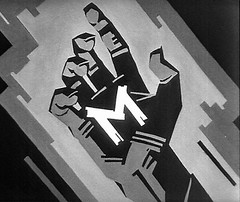Jean-Philippe Charbonnier's Psychiatric Hospitals exhibition, indicated by Chestionabil, reminded me about one of the most interesting experiments i've ever heard about. The Rosenhan experiment was a famous experiment conducted by David Rosenhan in 1972, which challenged the assumption that specially trained professionals have the ability to make reasonably accurate diagnoses when it comes to mental illness. Published in the journal Science under the title "On being sane in insane places", the experiment's conclusion clearly shows that "it is clear that we cannot distinguish the sane from the insane in psychiatric hospitals".
Starting from the question "if sanity and insanity exist, how shall we know them?", the experiment consisted of two parts.
The first involved the use of healthy associates or 'pseudopatients', who
briefly simulated auditory hallucinations in an attempt to gain admission to 12
different psychiatric hospitals in 5 different states in various locations in
the United States. The second involved asking staff at a psychiatric hospital to
detect non-existent 'fake' patients. In the first case hospital staff failed to
detect a single pseudopatient, in the second the staff falsely detected large
numbers of genuine patients as impostors. The study is considered an important
and influential criticism of psychiatric diagnosis.
Both the description of the experiment, and the reactions are fascinating, especially for people who spend qite an awful lot of time trying to figure out how people think, feel and behave.


5 comments:
Very interesting. I will read about the experiment at large. This as well reminds me of something: a book written by Erving Goffman and called Asylums. It is a book of essays about psychiatric pacients and their social condition and all sort of institutionalized individuals. It is interesting because it talks about the condition of such a person before it enters an institution like this and the way one's integrity is being anihilated through specific methods (which are being presented as main goals of what is called 'a total institution') :-)
Pentru cei interesati:http://www.historicasylums.com/
Fantastic story, Diana. If we cannot distinguish the sane from the insane ... or the experimenters from the experimented, it shows how the institutionalising or systematising of thought actually creates a certain result. Frightening really.
Hey Diana ... and then I found this amazing blog:
http://mytopsy-turvylife.blogspot.com/
Loved the video! Nice touch.
Hadn't heard of this experiment. Amazing. So many lines we have created in this world of gray shades... scary.
Absolutely fascinating, Diana, and I loved the video!
I find psychology fascinating, and I used to work in a psychologists office. One thing that struck me is that oftentimes when people go for psychological counselling, the thing that they are craving is really someone listening to them and someone giving them attention.
We humans are very susceptible to suggestion and also able to sense what would be of interest to another human being. In the psychologists office, it's not too hard to figure out that what would be incredibly interesting to the psychologist would be someone with interesting pschological symptoms, and so patients are smart enough to oblige. I think a lot of people get misdiagnosed because of this.
It's really incredibly difficult to say when a person is sane and insane. So many factors go into how our minds work, and then the person who's doing the diagnosis is also complex and capable of making mistakes. There's so much about human behavior that we don't understand.
Post a Comment